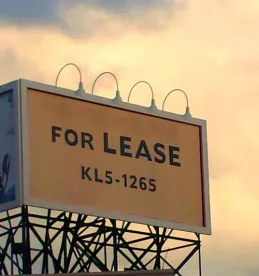Retail leases are typically net leases - requiring the tenant to pay as additional rent a share of the landlord's operating expenses. The allocation of operating expenses to be paid by a tenant under a net lease is generally determined by dividing the rentable square footage of the tenant's leased premises by the rentable square footage of the entire development. But this calculation often results in a tenant paying a portion of operating expenses that, although proportionate, is not a "fair share."
Measuring the Square Footage of the Premises
Careful consideration should be given by parties to a retail lease as to the process and standards used in measuring the square footage of the premises and project. Retail leases may, especially when the leased premises are new construction, provide for an architect (often the Landlord's architect) to calculate the square footage of the premises. A provision in the Lease that allows the recalculation of the square footage of the premises may be problematic for a tenant that has relied on the approximated square footage to calculate the costs of the space if the final calculation results in square footage substantially greater than anticipated, resulting in the rent and common area charges to exceed the tenant's budgeted amounts. To guard against these unexpected increases, the tenant should include a provision in the lease that states that for purposes of the calculation of rent and of tenant's proportionate share, the square footage of the premises will not exceed a specified square footage.
Retail tenants may also want the lease to provide that portions of the premises, even if designated for the exclusive use of the tenant, are to be excluded from the rentable square footage of the premises. For example, a restaurant operator excludes patio dining areas and drive-thru lanes from the calculation of the square footage of the premises for purposes of the proportionate share calculation. The definition of "rentable space" may also be of special concern to a retail tenant in a mixed-use building as the definition of "rentable space" could include the addition of a portion of the non-useable areas of the building located outside of the premises, like a portion of a common hallway. In such a lease, premises stated in the lease as consisting of a certain number of rentable square feet may in reality have a substantially smaller amount of square footage actually located in the premises.
Instead of providing for measurement of the premises, a retail lease may instead specify an agreed-upon square footage of the premises which will not be subject to re-measurement unless the premises are expanded or reduced by casualty or condemnation. By stipulating the parties' agreement to the square footage of the premises in the lease, the landlord avoids a tenant's demand for a refund for overpayment of rent or operating expenses. However, in many circumstances, it will be in the best interests of both the landlord and the tenant to obtain an accurate measurement of the square footage of the premises – not only to properly determine tenant's proportionate share – but also in the application of other provisions of the lease that may contain references to square footage. For example, provisions allowing rent abatement or lease termination if a certain percentage of the premises is impacted by a casualty and condemnation, or an exclusive use restriction prohibiting more than a specified amount of square footage of the premises that can be used for the sale of a restricted good or service, require an accurate measurement of the initial size of the premises to be fairly enforced.
Measuring the Square Footage of the Project
Retail leases typically provide for an allocation based upon the square footage of the premises over the square footage of all "rentable areas" in the shopping center. Leasing and administrative offices and kiosks are often excluded from the calculation of rentable square footage. In some projects, anchor stores, outparcel users, non-retail tenants or all tenants exceeding a certain square footage may also be excluded from the calculation of the rentable square footage of the project. Instead of using "rentable area" of the shopping center to calculate the tenant's allocable share, some retail leases provide that the calculation of a tenant's allocable share shall be the rentable area of the premises divided by the "rented" square footage in the shopping center – resulting in the tenant paying a higher portion of the operating expenses. While a tenant may not be able to negotiate an alternative method of calculation of apportionment of operating expenses, a tenant facing such a disproportionate allocation may instead negotiate a cap of operating expenses payable by tenant regardless of the calculation of the tenant's "proportionate share."





 />i
/>i
